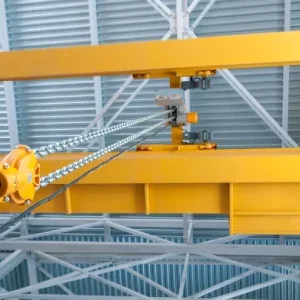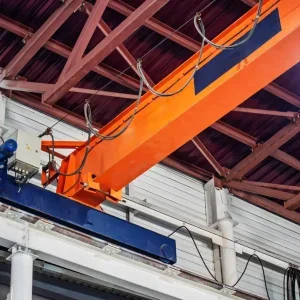‘In today’s digital world, we’re accustomed to having the information we need at our fingertips – whenever we need it. This is not only the expectation in our personal lives, but it also dictates the way we do our jobs. This idea of connectivity and instant access to information is what is driving Industry 4.0, or what we know as the Industrial Internet of Things (IIoT), and automation technology is playing an important role in making this possible.
As a global supplier of hoists, controls, and other overhead crane components, we understand the need for interconnectivity between intelligent devices and the importance of just-in-time information to keep operations running safely and efficiently. Data, and the ability to understand that data, is critical. That is where automation technology comes in.
Information provided by automation technology can help improve safety, uptime, and productivity. How? Information collected by automated systems can help you make better decisions – faster. The more information you have about your system, the easier it is to improve processes for operational efficiency, plan for maintenance, predict equipment failures, and identify needs for operator training.
Using variable frequency drives, sensors, and programmable logic controllers (PLCs), automated systems give you the ability to access system and equipment information in real-time or collect and analyze data over an extended period to identify trends. They can provide information about a single drive or piece of equipment or connect to the entire crane for full system information. They can also be used to view and monitor all drives in a single facility or, using the Cloud, connect facilities all over the world, providing companies with a single snapshot of the performance of their global operations.
Access to real-time information can also help improve safety. Automation technology can help you build safety right into equipment, systems, and processes to help prevent accidents from occurring. For example, no-fly zone technology allows you to designate areas where a crane should slow down or stop. This can help prevent suspended loads from injuring an operator or colliding with equipment. Side-pull or off-center pick prevention technology can be used to detect a load misalignment or a snag condition and alert operators with a visible and audible warning before a load is picked up incorrectly, preventing a dangerous situation.
The information from automated systems can also help improve productivity and increase uptime. Communication between a piece of equipment and the operator, or other key individuals in a facility, provides visibility to how equipment is being used. This allows you to proactively schedule equipment maintenance as well as understand if machinery is being used incorrectly to identify needs for operator training or process changes for improvement.
Access to information is one part of the equation. Knowing what to do with it is the other. Experienced automation partners and system providers can provide you with the expertise you need to get your system up and running. More importantly, they can work with you to make sense of the data you’re collecting about your equipment, so you can act on it.
Automation technology will continue to increase in importance as IIoT advances and the need for information and connectivity continues to increase. Take some time to understand how it can impact your business and what technology you can put in place today to propel your organization into the future.’






